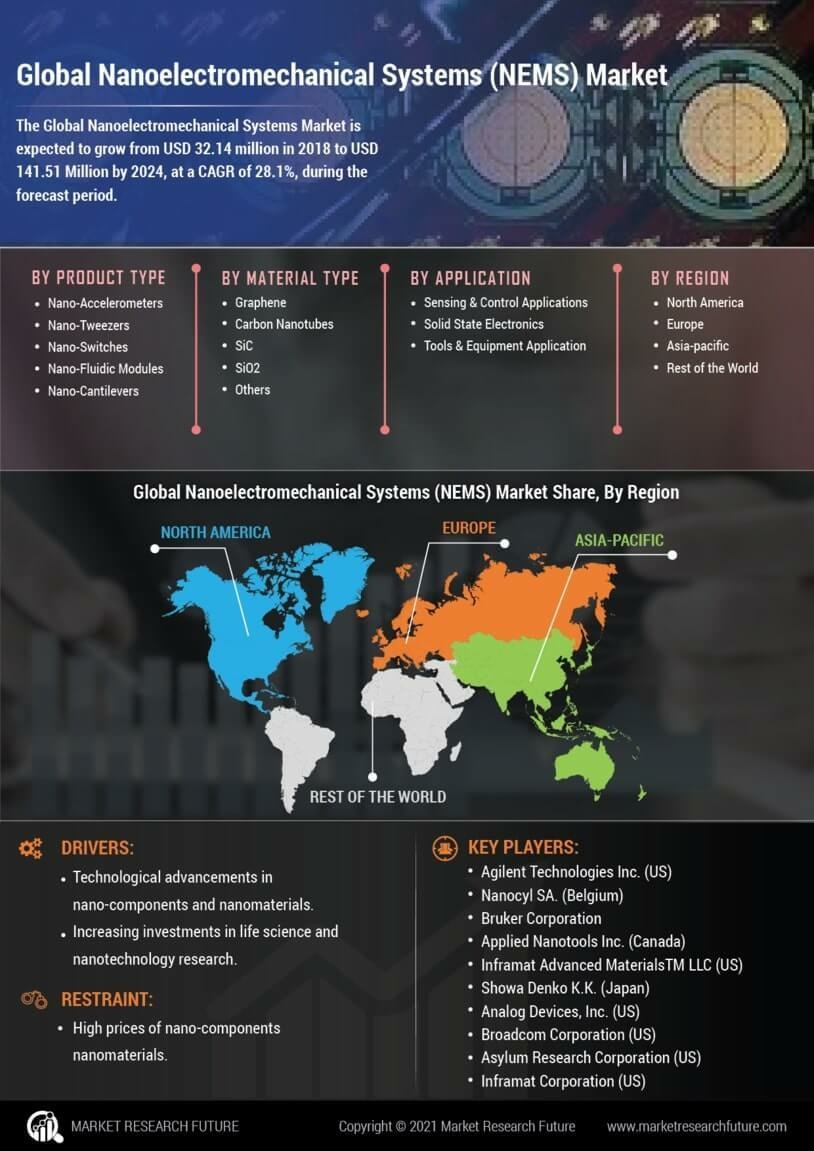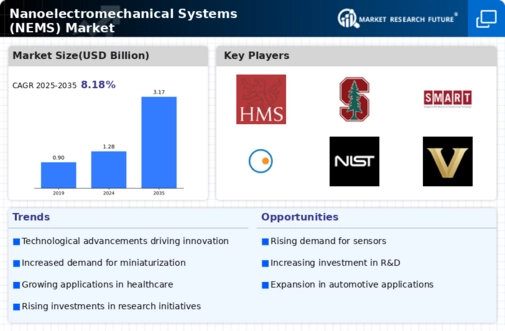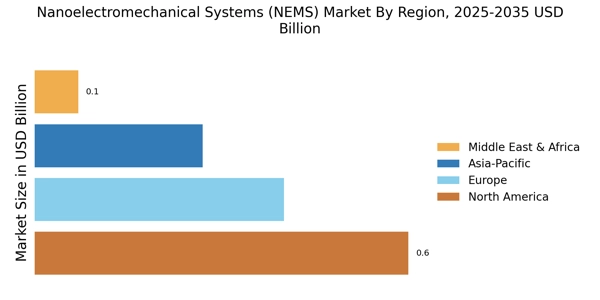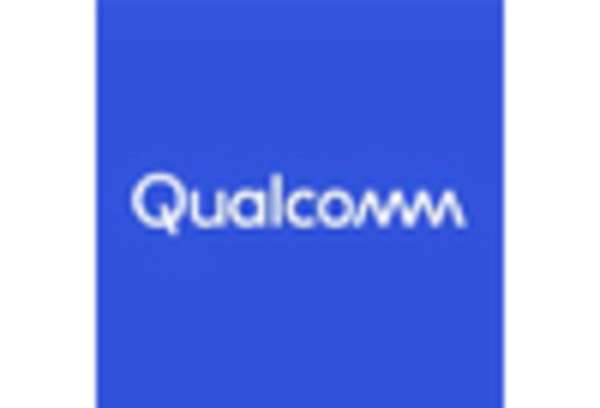Growth in Automotive Applications
The Nanoelectromechanical Systems Market (NEMS) Market is poised for growth due to the expanding applications in the automotive sector. With the automotive industry increasingly focusing on automation and smart technologies, NEMS devices are becoming integral to various systems, including sensors for tire pressure monitoring and advanced driver-assistance systems (ADAS). The market for NEMS in automotive applications is expected to witness a compound annual growth rate (CAGR) of over 15% in the coming years. This growth is indicative of the industry's shift towards enhanced safety and efficiency, where NEMS technology provides critical data for real-time decision-making.
Emergence of Biomedical Applications
The Nanoelectromechanical Systems Market (NEMS) Market is also seeing a burgeoning interest in biomedical applications. NEMS devices are being developed for use in medical diagnostics, drug delivery systems, and biosensors. The ability to operate at the nanoscale allows for highly sensitive detection of biological markers, which is crucial for early disease diagnosis. The market for NEMS in biomedical applications is projected to expand as healthcare providers seek innovative solutions to improve patient outcomes. This trend suggests a significant potential for NEMS technology to revolutionize medical practices, making it a focal point for research and development.
Increasing Adoption in Consumer Electronics
The Nanoelectromechanical Systems Market (NEMS) Market is experiencing a notable surge in adoption within consumer electronics. As devices become increasingly compact, the demand for miniaturized components is paramount. NEMS technology, with its ability to integrate mechanical and electrical functions at the nanoscale, offers solutions that enhance performance while reducing size. For instance, the market for NEMS-based sensors is projected to grow significantly, driven by the need for high-precision measurements in smartphones and wearables. This trend indicates a shift towards more sophisticated consumer products, where NEMS components play a crucial role in improving functionality and user experience.
Rising Investment in Research and Development
The Nanoelectromechanical Systems Market (NEMS) Market is witnessing a rise in investment directed towards research and development. As industries recognize the potential of NEMS technology, funding for innovative projects is increasing. This investment is crucial for advancing the capabilities of NEMS devices, leading to improved performance and new applications. The trend suggests that as more companies enter the NEMS market, competition will drive further innovation. This influx of resources is likely to accelerate the development of next-generation NEMS technologies, positioning them as key players in various sectors.
Advancements in Energy Harvesting Technologies
The Nanoelectromechanical Systems Market (NEMS) Market is benefiting from advancements in energy harvesting technologies. NEMS devices can convert ambient energy into usable electrical energy, which is particularly advantageous for powering small electronic devices. This capability aligns with the growing demand for sustainable energy solutions. The market for energy harvesting NEMS is expected to grow as industries seek to reduce reliance on traditional power sources. This trend indicates a shift towards more sustainable practices, where NEMS technology plays a pivotal role in enabling self-sustaining devices.
















Leave a Comment